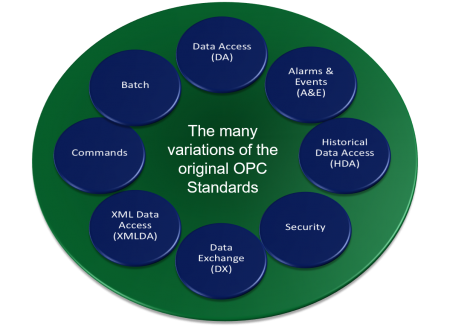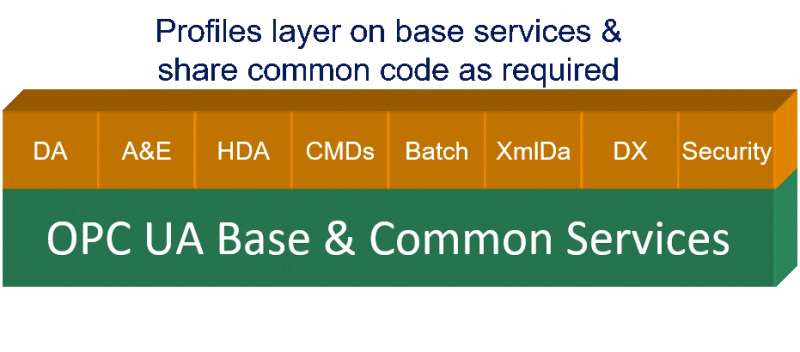In last month’s OPC Connect Newsletter, Stefan Hoppe from the OPC Foundation gave everyone a great talk about the OPC Foundation and its role in open standards, OPC UA, Industry 4.0, and security.
As a member of the OPC Foundation since 1996, Software Toolbox’s engineers answer a lot of questions from users of software products that leverage OPC standards. With the changing generations of workers in operations technology (OT) and automation, and the blending of IT and OT roles in many companies, we speak to many people that are new to OPC, whether young or experienced.
So we decided for this month’s OPC Connect newsletter to offer to readers our ‘Beginners Guide to OPC – Common Questions’. This free guide is focused on the practical, day to day things our engineers hear from users.
But first, to give you an idea of the useful nuggets of information you’ll find in our guide, let’s discuss some of the most common questions we hear from people in an attempt to hopefully remove the mystery for you and whet your appetite for more useful OPC Q&A.
Why so many standards? DA, A&E, HDA, UA – seems like alphabet soup?
 There are multiple standards because there are multiple software to software and software to hardware problems that the independent OPC Foundation set out to solve starting in 1995. Each standard addresses a different problem type.
There are multiple standards because there are multiple software to software and software to hardware problems that the independent OPC Foundation set out to solve starting in 1995. Each standard addresses a different problem type.
Remember the original problem OPC set out to solve with OPC Data Access or OPC DA, which was control hardware to software communications as shown here.
The OPC DA standard defines function calls to read, write, and subscribe to data points like analog and digital values, integers, floats, strings, etc. There are no complex data structures, it’s all about moving real time data effectively and openly.
We discuss the other 2 major original OPC standards next in this paper: OPC A&E and OPC HDA.
You may have also heard about OPC XML-DA, OPC Security, OPC commands, & OPC batch.
All of these were standards to address specific types of problems, but none were as widely adopted as OPC DA, A&E, and HDA.
As a collection, these original OPC standards are now known as OPC Classic. It may be “Classic” but to be clear, these standards are still widely used and implemented and there are millions of installed OPC Classic servers and clients in the world. Examples of OPC DA servers in the Software Toolbox offering include TOP Server for Wonderware, OmniServer, and Cogent Datahub.
Why OPC UA?
The OPC Unified Architecture (OPC UA) seeks to take what was learned over the first 10-15 years of OPC and remove duplication in code and interfaces that were obstacles to adopting multiple parts of the standard, and expand the uses of OPC into other applications.
With the OPC Classic interfaces, developers had to include foundational OPC code over and over again for the different interfaces standards. Now they can use a unified code-base and implement whatever profiles they need. So the classic OPC standards became OPC UA Profiles and an OPC UA server or client describes itself based on what profiles it supports such as OPC UA DA profile, A&E profile, HDA profile, etc.
The most popular benefit of OPC UA is that it can be used across operating system platforms, communicates using a single TCP/IP port, offers SSL encryption, and allows for security rights control to the tag level based on user credentials, provided the OPC client and server have implemented all the required facets.
Looking to the future, because OPC UA had to support the more complex data structures of Alarms & Events and Historical Data, it was a logical extension to allow for support of just about any complex data model and provide mechanisms for the implementation of other complex data models for other standards to use OPC UA as the transport.
Software Toolbox offerings using OPC UA include TOP Server for Wonderware, Omniserver, Cogent DataHub, OPC Data Client, OPC Data Logger and SLIK-DA for UA.
Can OPC UA talk to OPC DA and vice versa?
OPC UA and OPC DA can’t talk directly, but there are OPC Gateway applications that can share data in a single or bi-directional configuration between the 2 standards.
This is useful when you have existing systems that you need to integrate with OPC UA but you aren’t able to or ready to upgrade all the software in your systems. Simple gateway applications make the transition possible.
Learn the answers to these other common OPC questions by getting your free beginner’s OPC guide here.
- What does the OPC acronym stand for?
- What’s the difference between an OPC client and OPC server?
- Why do I need OPC servers if my control hardware vendor says they support OPC?
- Do OPC servers have to run on Server class computers and operating systems?
- How can 2 OPC servers talk to each other?
- How can two OPC clients talk to each other?
- What’s OPC A&E?
- What’s OPC HDA?
- Can OPC DA 2 and DA 3 clients and servers talk to each other?
- What are OPC data quality and timestamps all about?